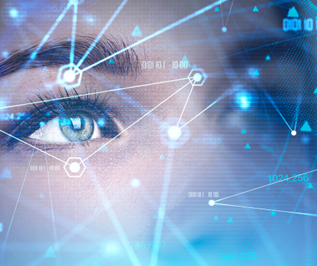Embarking on my optometry school journey amid the unprecedented times of the COVID-19 pandemic has been a unique and challenging experience, emphasizing the importance of adaptability in an ever-changing world. In this era dominated by technology, the shift to virtual learning became a cornerstone for education, requiring students to embrace change and find innovative ways to thrive. I argue that adaptability cultivated during those challenging times would soon prove to be a valuable asset.
While Zoom sessions became the norm for our education, another groundbreaking force was quietly making its presence known—artificial intelligence (AI). Although not yet a dominant force in optometry, it is only inevitable for AI to become an integral part of our profession.

What is AI?
AI is the ability of computer systems to analyze data to solve problems and complete tasks that normally require human intelligence. These computer systems work by ingesting large amounts of labeled training data, analyzing the data for correlations and patterns, and using these patterns to make predictions about future states. The field of AI continues to evolve, with ongoing advancements in machine learning, deep learning, natural language processing, and robotics.
What are the potential benefits?
- Personalized treatment plans
- Improve decision-making and better patient outcomes
- Improve efficiency
- Analyzing retinal images
- The ability to reduce workflow by automating routine tasks
The parallels between our profession and the emerging field of AI became increasingly apparent. Optometry, like AI, relies heavily on data collecting. AI’s ability to analyze extensive data, identify patterns, and make accurate predictions is revolutionizing the accuracy and efficiency of patient care in optometry. By leveraging advanced algorithms and machine learning, AI has the ability to enhance diagnosis and screening, detecting early signs of conditions such as diabetic retinopathy and glaucoma. AI also enables personalized treatment plans by considering patient history, lifestyle factors, and genetic data, improving patient satisfaction and treatment efficacy. A clinician will be able to complement their complex decision-making with AI to improve patient care and create better outcomes.
What are the potential drawbacks?
- Patient privacy
- Critical thinking lost
- Cost
- Accuracy
- Potential biases with data
While AI brings numerous benefits to optometry, it also raises some concerns and ethical considerations. Attention must be given to data privacy as HIPAA security is vital if AI is ever going to be implemented in the health care space. Patients will lose trust if information they provide is not secure. There grows concern on doctors becoming solely reliant on this technology to treat and diagnose patients. The inability to discern between AI-generated and human-generated insights can be detrimental in situations requiring independent decision-making, such as when a patient is sitting in front of you.
Current research looks at accuracy of using AI as a diagnostic tool. Although some are promising, others have shown that while significantly faster at diagnosing conditions, ChatGPT was significantly inferior in diagnosing ophthalmology cases compared with residents or attendings, based on patient history with or without clinical examination.
Final thoughts
Looking ahead, the future of AI in optometry appears promising, with potential applications in predictive analytics, telemedicine and reducing workflow through automation.
There is always the concern that technology will replace doctors, but I see AI as a tool to aid us to provide more efficient and effective patient encounters.

